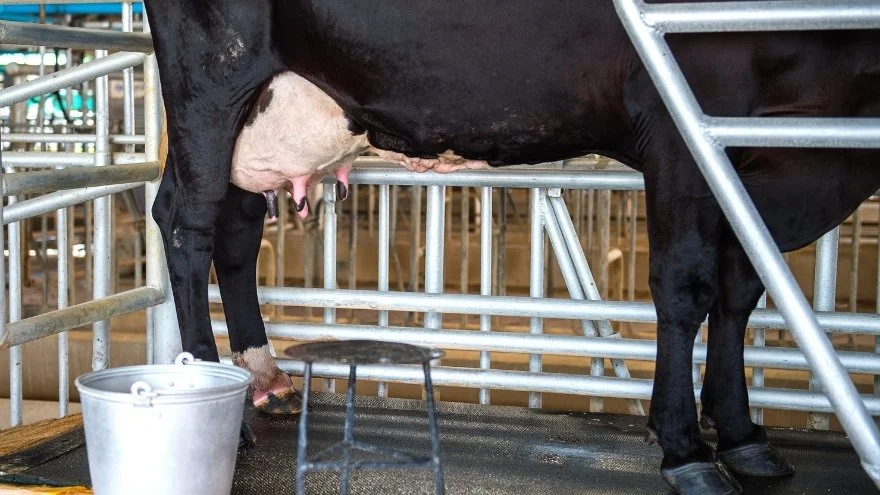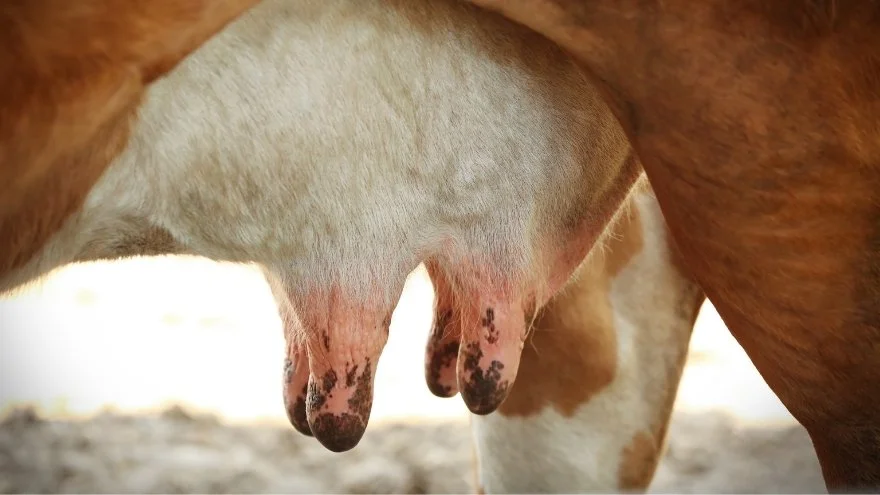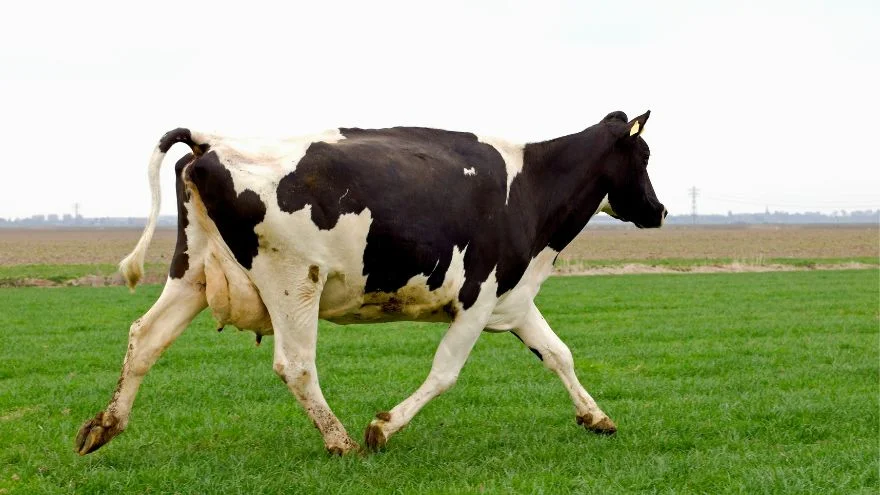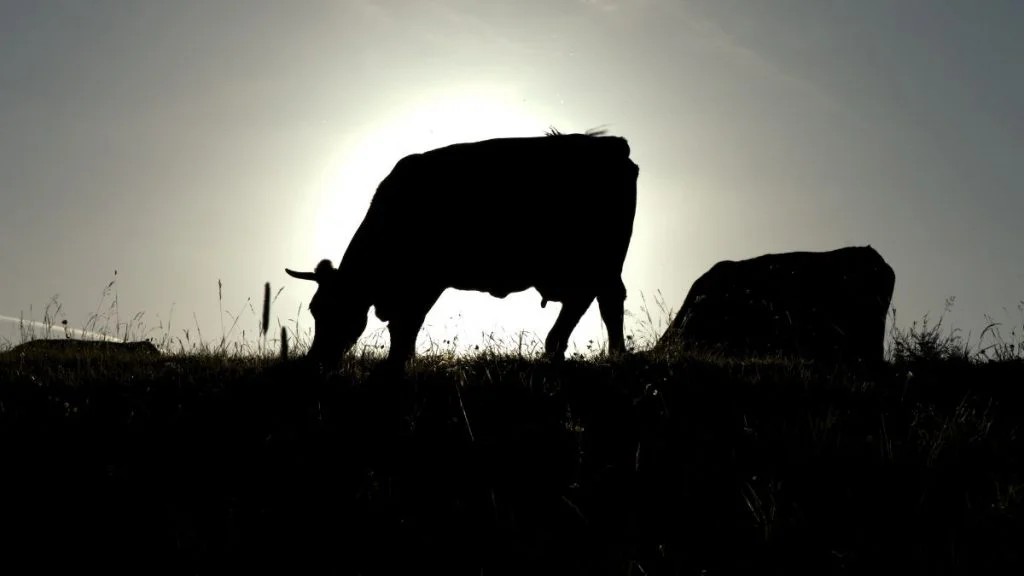To a novice, cows all look the same. It can sometimes be difficult to identify a male from a female, especially since most people assume both genders have udders.
But do male cows have udders?
A straightforward answer is no, male cows do not have udders. Udders are their version of breasts, and it is reserved for female cows.
These udders bring out milk that calves feed on and humans use. Males don’t have this natural role.
This article will uncover the reasons why male cows do not have udders, distinguishing features between male and female cows, and other interesting facts.
Do Male Cows Have Udders?

An udder is formed of either two or four mammary glands. They are the equivalent of a female breast and are present in females of ruminants and dairy animals such as sheep, goats, and cattle.
However, as mentioned earlier, male cows do not have udders.
Udders perform the same function as female breasts, providing and feeding milk to their young calf.
Cows tend to produce more milk than their calf needs, hence herd breeders milk out the excess.
A well-fed cow, on average, produces about 9,000 liters of milk annually. That isn’t surprising considering these cows are bred for milk production. 1
The biological cycle of milk production in cows also contributes to the excesses. For instance, after getting pregnant, they keep producing milk for as long as ten months before a break.
Udder Development in Cows
As earlier stated, the udder is a group of mammary glands and is comparable to the female breast. It development process begins when cows reach puberty stage.
An udder contains four glands, each gland having a teat. A teat is the discharging spot of milk.
Young calves suck on the teat to get milk, and farmers also drain the milk from the udder from the teat. In essence, the teat is a vital part of the udder. Milking may be impossible for cows without it.
Do all Female Cows Have Udders?
The udder is the equivalent of the female breast and a group of mammary glands responsible for producing milk to feed young calves.
Hence, it is logical to conclude that all female cows have udders. However, this is not always the case.
A more accurate statement is that all female cows have the potential of developing udders as female cows with visible udders depend on the reproductive state and age of such cows.
Infertile cows, or heifers as they are called, and young female calves do not have udders but milkless teats.
What Happens When Cows are Not Milked?
Cows are generally bred for milk and meat. In most cases, female cows are bred for milk and male cows for beef, plowing, and fertility purposes.
Their usefulness can only be underemphasized. These animals are not only a vital source of meat and milk to humans, but they also help farmers enormously with their strength in several farming practices.
Their dung equally serves as manure to increase crop growth.
Yet, some consider cows being bred to milk inhumane. It may seem on the surface and from a moral perspective, but the contrary is the reality.
A lactating cow produces an average of 30.28 liters of milk daily. Their calves cannot possibly consume all of this milk in a day.
Excess milk in the udder can result in udder infection, intense pain, injury, inflammatory reaction, and other physical trauma.
So as much as milking cows benefit humans, it benefits cows as well.
Why Do Male Cows Not Have Udders?
Male cows do not have udders for the same reason men and women have different mammary glands.
They do not give birth to young calves, therefore, they aren’t biologically responsible for tending and feeding calves.
Rather, they impregnate cows, and that is all. Yet, bulls do have teats close to their hind legs.
These teats are not as significant in function as with teats of female cows.
How to Determine if a Cattle is a Bull, Steer, Cow, or Heifer
All cows look strikingly the same despite the fact they’re quite different.
If you are not familiar with cows, you may not exactly tell the difference between a male and a female or even mistake a male with teats for a female with udders.
Elaborated below are the significant difference between male and female cows.
Among cattle, there are bulls, steers, cows, and heifers. The bull and steer are male, whereas the heifer and cow are female.
Bull

Bulls are mature, grown male cows with their testicles intact. They are usually bigger and more muscular than other types of cattle and have horns.
However, some may not have horns. A major identifying feature is its intact testicles in its midsection area.
They are usually bred for farming, meat, and fertility purpose.
Steer
The steer is as well a male cow. The difference is steers do not have testicles as farmers or breeders often castrate them before puberty.
In appearance, steers are not as big and muscular as bulls. However, some have horns.
A sure way to identify a steer is to look for the absence of testicles in its midsection.
Cow
A cow is a mature female heifer. They have fully developed udder and at least must have birthed a calf.
Also, they possess vulva under their tails that are larger than that of a young heifer.
Heifer
Heifers are young female cows under two years of age. They are yet to give birth and have no udders as they haven’t reached puberty yet.
Usually, they are smaller in size, considering their young age, and you can easily identify them by the absence of udders in their midsection.
Interesting Facts About Cows
- The number of rings on a cow horn is its age.
- They can pick their nose with their tongue.
- Cows can live for as long as twenty-five years.
- They are social creatures; they tend to want to be in a herd.
- Cows are colorblind to the color red.
- They have incredible memories. They can remember a certain food location and recognize and remember different human faces.
- Cows moo in different ways that suggest they have regional accents. Depending on where they are from, their moos slightly differs from cows from other regional location. 2
- Although these animals are called cows in general, cows refer to females. The males are called bulls.
- They can doze off lightly while standing up. However, this doesn’t mean they can sleep deeply on their feet. For that, they must lie down.
- Dairy cows produce over 125 pounds of saliva per day.
Conclusion
Male cows do not have udders, their female counterparts do. Nonetheless, the prominence of a female udder is only obvious during lactation, pregnancy, or feeding of young calves.
Male cows or bulls have teats but don’t produce milk as they are incapable of bearing young calves.



